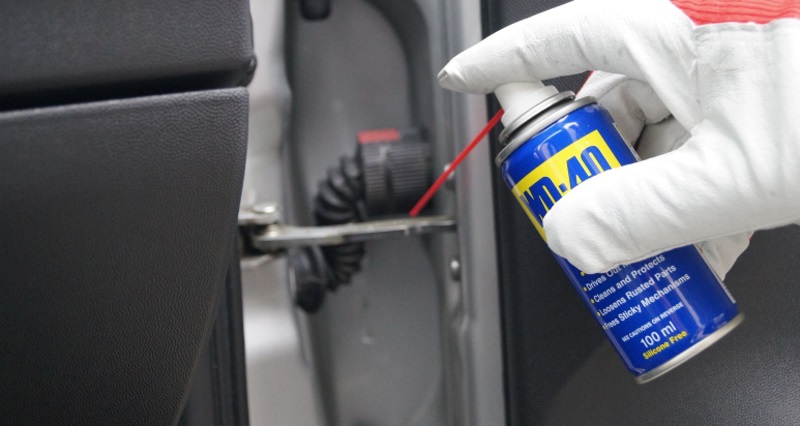Many steering and suspension components require periodic lubrication. A vehicle may have serviceable ball joints, tie rod ends and universal joints equipped with grease fittings. Some newer models come with sealed joints that are lubed for life, or at least until a replacement is necessary. Access the maintenance history and warranty status of a vehicle through a VIN lookup to determine which parts require replacement. Here are the supplies and steps necessary to lubricate the chassis of any vehicle and prolong the life of serviceable driveline and suspension parts.

Gather Lubrication Supplies
The most essential equipment for lubricating an auto chassis includes a jack and jackstands and wheel chocks or blocks to lift and secure the vehicle as well as an auto grease gun and replacement grease cartridges. Various components call for different types of grease such as heavy-duty lithium grease for the chassis or silicone spray for rubber suspension bushings. These lubricants should not be mixed.
A creeper, gloves and rags are also useful to have on hand. Load a grease gun by pulling back the plunger and locking it into place before unscrewing the main barrel. Remove the plastic cap and pull-tab from a new grease canister and slip the tube into the barrel. Thread the canister back onto the pump head and release the plunger handle.
Lift the Vehicle
Depending on the vehicle, lifting may be necessary to access chassis components. If you are not sure how to lubricate chassis that rides low to the ground, start by raising the vehicle with a jack and insert stands for safer access.
It is a good idea to start working at one corner and work your way around the front of the vehicle before moving to the rear to ensure that you do not overlook any serviceable fittings. Unlocking the steering wheel so that wheels can turn may make it easier to access all suspension points and steering components.
Apply Grease to Fittings
Each side of a vehicle typically has one upper and one lower ball joint and an outer tie rod end. It may be necessary to remove offset tire assemblies and wheels to gain easy access to these fittings. Every suspension point should have a bushing or joint, with up to a dozen fittings on the front suspension system alone.
Other points on the chassis that may benefit from lubrication include tie rod ends, sway bar links, control arm pivots and up to three U-joints on the drive shaft depending on whether a vehicle has front-wheel, rear-wheel or four-wheel drive.
If a fitting is serviceable, connect the hose of the grease gun to the grease fitting or zerk and push on the connector until it clicks into place. Continue to pump the trigger until a few grease squirts out of the connector side, making sure not to overfill the fitting.
Fittings may become clogged with dried grease or dirt and require cleaning with a wire and solvent or replacement. Inspect the condition of fittings every six months to prolong the life of the driveline and suspension parts.




